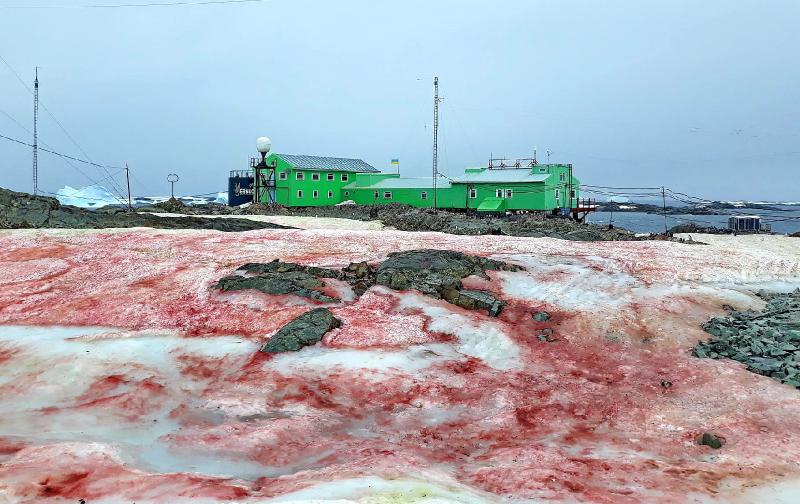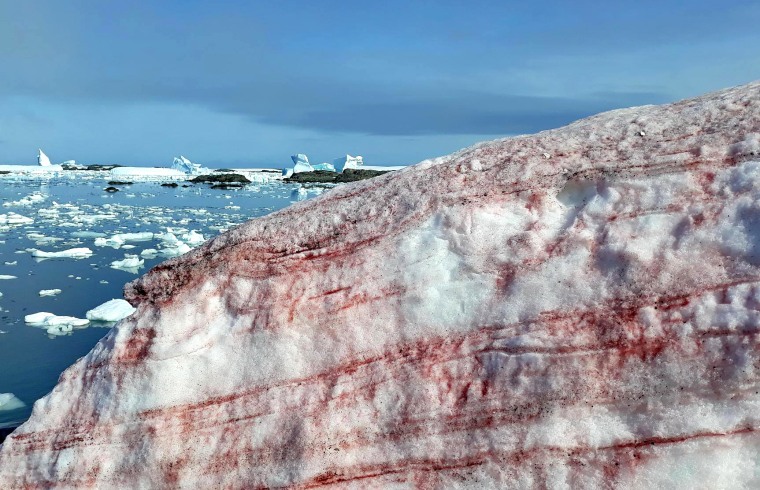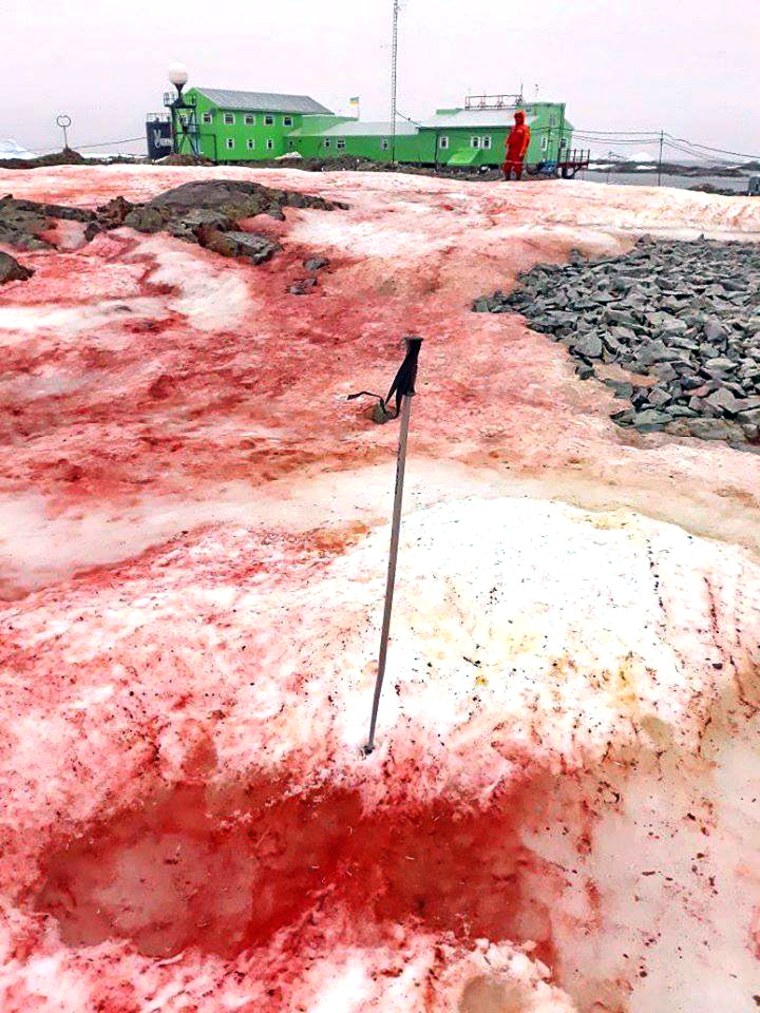WEIRD SCIENCE Spooky 'blood snow' invades Antarctic island
Category: News & Politics
Via: perrie-halpern • 4 years ago • 5 commentsBy: Brandon Specktor, Live Science



It's summer in Antarctica , which means record-high temperatures , jarring glacial melt and — in a very metal symbol of our changing climate — a bit of blood-red snow spattered across the Antarctic Peninsula.
Over the past several weeks, the ice around Ukraine's Vernadsky Research Base (located on Galindez Island, off the coast of Antarctica's northernmost peninsula) has been coated in what researchers are calling "raspberry snow." A Facebook post by the Ministry of Education and Science of Ukraine shows the scene in full detail: streaks of red and pink slashing across the edges of glaciers and puddling on the frosty plains.
 The red streaks are actually a type of red-pigmented algae that hides in snowfields and mountains worldwide. Andrey Zotov
The red streaks are actually a type of red-pigmented algae that hides in snowfields and mountains worldwide. Andrey Zotov That blood (or "jam" as the researchers whimsically call it) is actually a type of red-pigmented alga called Chlamydomonas Chlamydomonas nivalis , which hides in snowfields and mountains worldwide. The algae thrive in freezing water and spend winters lying dormant in snow and ice; when summer comes and the snow melts, the algae bloom, spreading red, flower-like spores.
This phenomenon, which Aristotle noticed way back in the third century B.C., is known as "watermelon snow," "blood snow" and a host of other less poetic names.
 Blood-red algae blanket the snow near Antarctica's Vernadsky Research Base. Andrey Zotov
Blood-red algae blanket the snow near Antarctica's Vernadsky Research Base. Andrey Zotov The phenomenon's red color comes from carotenoids (the same pigments that make pumpkins and carrots orange) in the algae's chloroplasts. In addition to their crimson hue, these pigments also absorb heat and protect the algae from ultraviolet light , allowing the organisms to bask in the summer sun's nutrients without risk of genetic mutations.
That's good for the algae but not great for the ice. According to the Ukrainian researchers, it’s easy for these blooms to kick off a runaway feedback loop of warming and melting.
"Snow blossoms contribute to climate change," the team wrote in the Facebook post. "Because of the red-crimson color, the snow reflects less sunlight and melts faster. As a consequence, it produces more and more bright algae."
The more heat the algae absorbs, the faster the surrounding ice melts. The more ice that melts, the faster the algae can spread. That, in turn, leads to more warming, more melting, and more algal blooming.
A similar feedback process is driving more extreme algal blooms in oceans all over the world, resulting in surreal scenes like an invasion of sea foam in Spain and blue, bioluminescent "tears" clinging to China's coasts. While watermelon snow has existed for millions of years, algal blooms thrive in warm weather, meaning we can probably expect to see more events like this as the climate changes.



meaning we can probably expect to see more events like this as the climate changes.
Or maybe not, since its been going on for millions of years of changing climate.
Unfortunately the world is now overpopulated by humans who only exacerbate feedback loops by the rapid destruction of carbon sinks such as oceans and forests and the rapid introduction of greenhouse gasses on an unprecedented level.
Anthropogenic CO2 and other greenhouse gasses are now at an extreme level not seen for millions of years.
Thanks to fossil fuel industry paid science deniers (like the Heartland Institute), mankind may have already waited too long to fix this suicidal race to extinction.
Is not this algae a co2 sink as well? Seems everyone should be thrilled this algae is flourishing, as it grows it locks co2 back into the glaciers and eventually their nutrients back into the food chain.
The algae thrive in freezing water and spend winters lying dormant in snow and ice;
So we need to keep the snow and ice from thawing to keep an algae that has adapted to the fact that snow and ice periodically melts, so it can flourish, and on top of that the algae evolved and found a way to melt even more snow and ice, and now that is now a problem. Why don't we just kill off this algae and problem solved /s.
I suggest using thermonuclear devices to destroy the algae. After all, nothing has ever gone wrong with mankind employing` inexpensive environmental fixes.